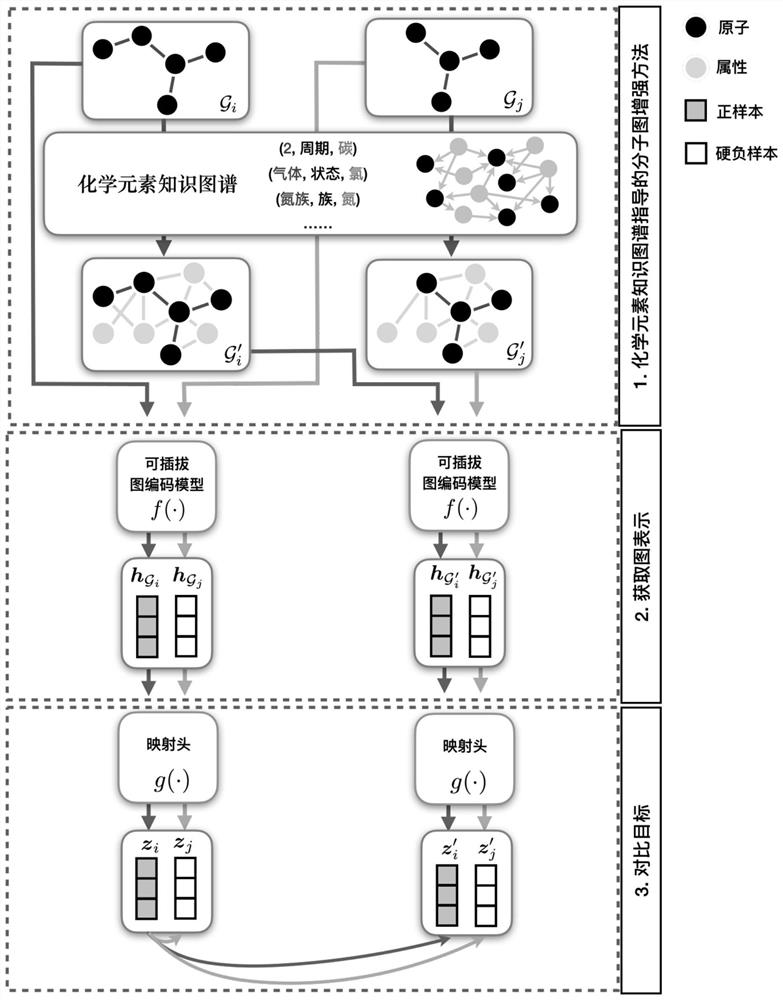Molecular graph comparison learning method based on chemical element knowledge graph
A technology of chemical elements and knowledge graphs, applied in chemical machine learning, chemical statistics, chemical data mining, etc., can solve problems such as difficult new graphs, lack of parameter sharing of encoders, changes in molecular graph characteristics and chemical meanings, etc.
- Summary
- Abstract
- Description
- Claims
- Application Information
AI Technical Summary
Problems solved by technology
Method used
Image
Examples
Embodiment Construction
[0025] In order to make the object, technical solution and advantages of the present invention clearer, the present invention will be further described in detail below in conjunction with the accompanying drawings and embodiments. It should be understood that the specific embodiments described here are only used to explain the present invention, and do not limit the protection scope of the present invention.
[0026] figure 1 It is a flow chart of the molecular graph comparison learning method based on the chemical element knowledge graph provided by the embodiment of the present invention. Such as figure 1 As shown, the molecular map comparison learning method based on the chemical element knowledge map provided by the embodiment includes the following steps:
[0027] Step 1. Based on all the chemical properties of each chemical element obtained from the periodic table of chemical elements, a knowledge map of chemical elements is constructed to establish the microscopic che...
PUM
 Login to View More
Login to View More Abstract
Description
Claims
Application Information
 Login to View More
Login to View More - R&D
- Intellectual Property
- Life Sciences
- Materials
- Tech Scout
- Unparalleled Data Quality
- Higher Quality Content
- 60% Fewer Hallucinations
Browse by: Latest US Patents, China's latest patents, Technical Efficacy Thesaurus, Application Domain, Technology Topic, Popular Technical Reports.
© 2025 PatSnap. All rights reserved.Legal|Privacy policy|Modern Slavery Act Transparency Statement|Sitemap|About US| Contact US: help@patsnap.com



